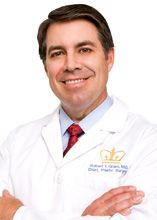When to Resume Normal Activities After Rhinoplasty
To better inform potential rhinoplasty recipients, I've compiled a list of common activities patients have asked about resuming and detailed how long a patient should wait before entering into them.

The nose is the most prominent feature of the face, and as such, it is one of the first things that others notice about us. Having excessively flared nostrils, a nasal bridge with a pronounced bump, or a nose that is crooked due to injury can impact how we present ourselves to the world at large. Thus, undergoing cosmetic surgery to enhance the nose can greatly increase a patient’s confidence, as well as provide a significant self-esteem boost.
Every day, numerous patients ranging from ages 15 to 50 are electing for rhinoplasty procedures. In fact, the American Society of Plastic Surgeons (ASPS) 2012 Report notes that more than 242,000 rhinoplasty procedures were performed last year, only second to breast augmentation procedures. With its high success rate and less aggressive healing time, rhinoplasty procedures are still in high demand.
But with any cosmetic procedure, ample recovery time is needed to ensure the best possible results from the surgery. While most people understand this is part of the process, no one wants to have their lives put on hold.
When it comes to a rhinoplasty procedure, one of the first questions many patients ask is when they can start resuming with their normal activities. While it is important that a patient show care in the early stages of recovery to ensure that the healing process can occur uninhibited, someone who has just had a “nose job” does not have to hide away for months on end.
To better inform potential rhinoplasty recipients, I’ve compiled a list of common activities patients have asked about resuming and detailed how long a patient should wait before entering into them.
Exercise
This may be the most common question patients ask. It is generally a good idea to wait 4-7 days to begin light cardiovascular activities such as walking. However, more vigorous or high-impact exercise should be held back until 18-21 days. If patients experience any pain while exercising, they should stop immediately and wait a little while longer before trying again.
Flying
Airline travel is one of the most commonly used means of transportation for long-distance trips, and many even patients fly to a different destination for their rhinoplasty procedure. The good news for these patients is they can find themselves back in the sky within a few days of undergoing their surgery.
Intimacy
When it comes to intimacy, being careful is key. It is generally suggested to hold off on any physical intimacy for 10-14 days, but that is not always the case. It is important to bear in mind that the reason for waiting is to prevent bleeding or increased swelling that will delay the healing process. Gentle lovemaking can be fine, provided the activity is not too vigorous. For more intense lovemaking, it is important to wait.
--
I’ve also been asked quite often about the potential effects of premature activity following a rhinoplasty procedure. A patient who resumes activities too early can cause important blood clots to break free. An increase in swelling can also occur, which may prevent proper healing. All of those roads can lead to a longer recovery time and possibly even compromised procedure results.
As each patient is different, the best way to ensure the most benefits from the healing process of any procedure is to communicate thoroughly with the plastic surgeon. Together, they will determine the best road to recovery.
Robert T. Grant, MD, MSc, FACS, is Chief of the combined Divisions of Plastic Surgery at New York-Presbyterian Hospital-Columbia University Medical Center and New York-Presbyterian Hospital-Weill Cornell Medical Center. He is also Associate Clinical Professor of Surgery in the College of Physicians and Surgeons at Columbia University and Adjunct Associate Professor of Clinical Surgery at Weill Cornell Medical College. For more information about Dr. Grant or to contact him, visit his website at www.robertgrantmd.com.